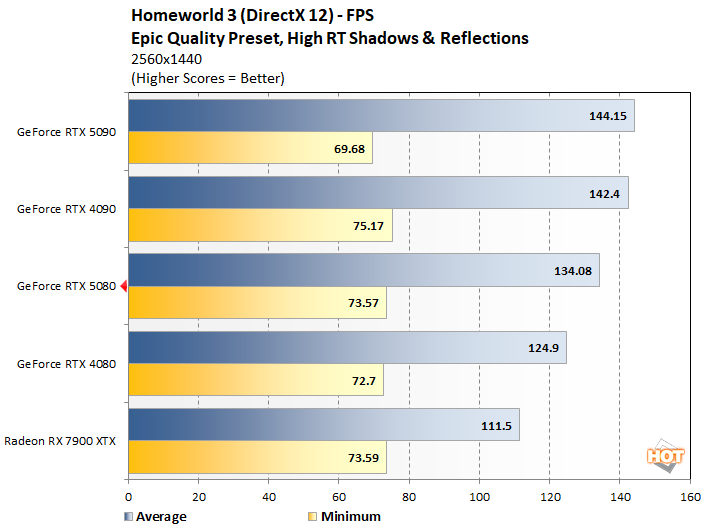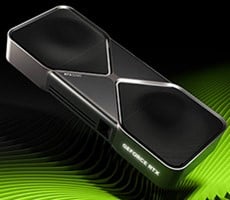NVIDIA GeForce RTX 5080 Founders Edition Review With Copious Benchmarks
Homeworld 3 Benchmarks
Homeworld 3 was effectively CPU limited on the GeForces when running at 1440p on the RTX 5090 and RTX 4090, but the GeForce RTX 5080 FE did fall a bit behind and lands in the middle of the pack. The deltas separating the cards spreads out when running the game at 4K, and the GeForce RTX 5080 FE outruns the RTX 4080 by approximately 13%.

With FSR 2 or DLSS enabled (sans frame generation, Balanced preset), the CPU limitation in this game levels the playing field somewhat, and the GeForce RTX 5080 FE and previous-gen RTX 4080 end up performing similarly.
RTX 5080 Horizon Zero Dawn Remastered Benchmarks

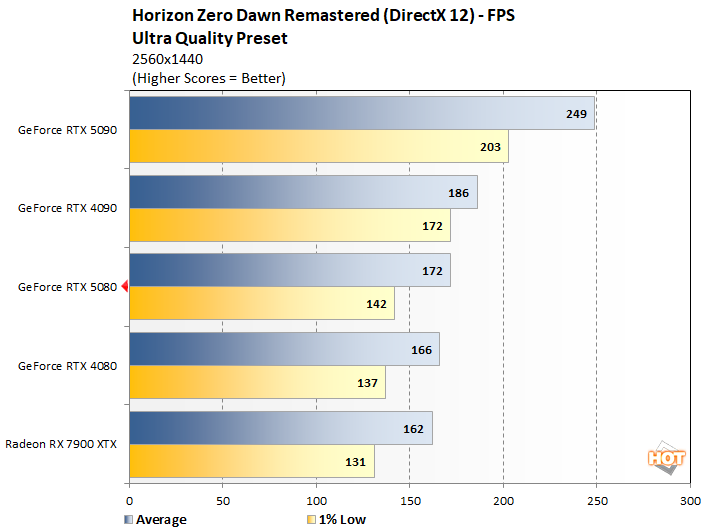
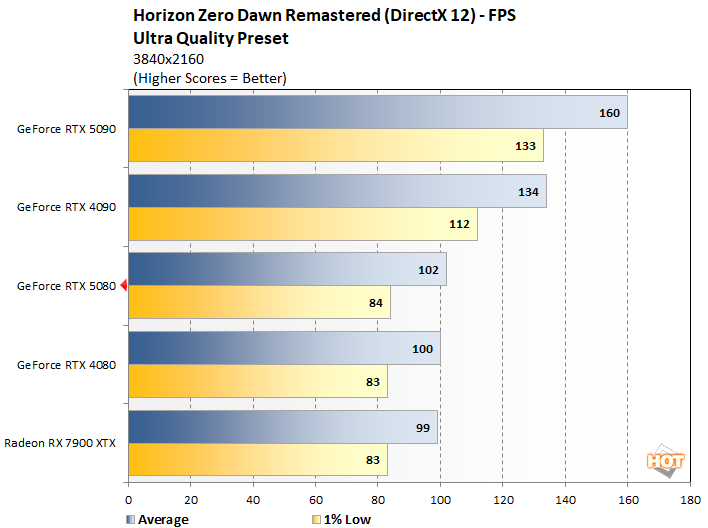

This game supports DLSS and FSR 3, and frame generation is an option too. With resolution scaling enabled on its own, the GeForce RTX 5080 FE pulls slightly further ahead of the RTX 4080; the same rings true with frame generation enabled. Nothing can touch the GeForce RTX 5090, though.
The Talos Principle II Testing

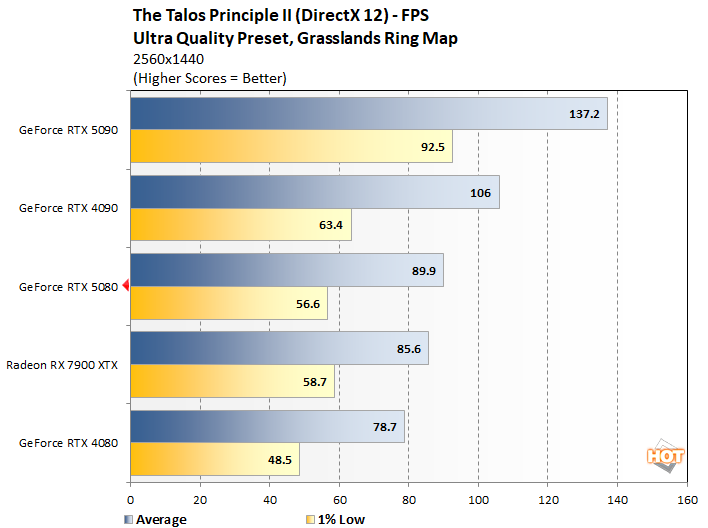


Assassin's Creed Mirage Benchmarks

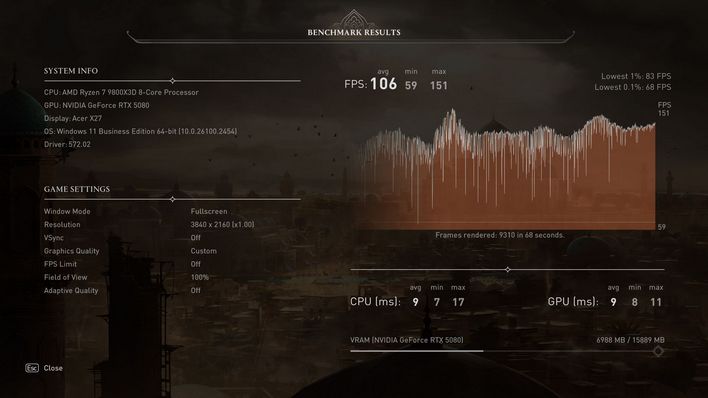
Assassin's Creed Mirage GeForce RTX 5080 FE Details @ 4K
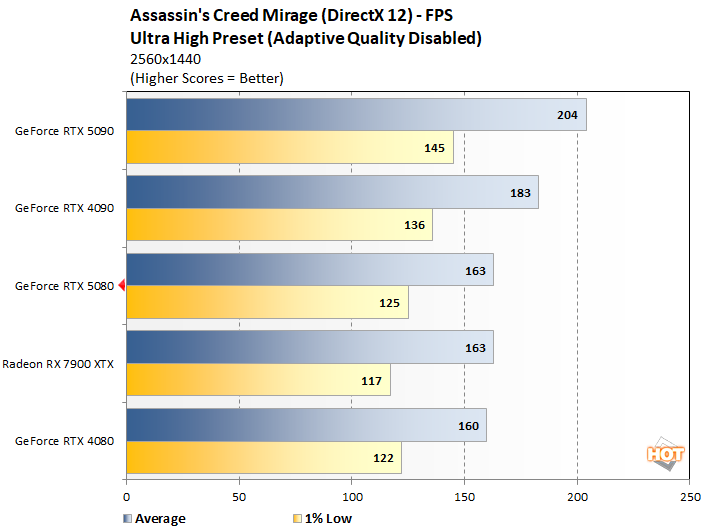
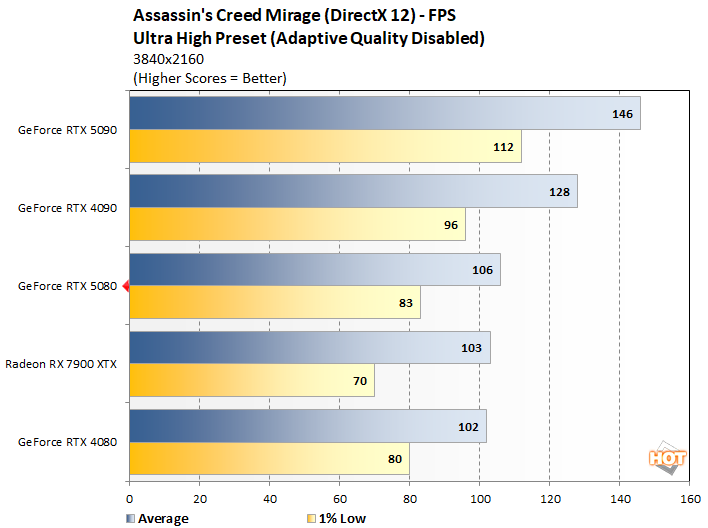
The deltas separating the enthusiast-class cards in Assassin's Creed Mirage were relatively small, with the GeForce RTX 5080 FE and RTX 4080 performing on par with one another. The RTX 5080 technically had better 1% low and average framerates, but we're talking about only a few FPS in this game when running at native resolutions.
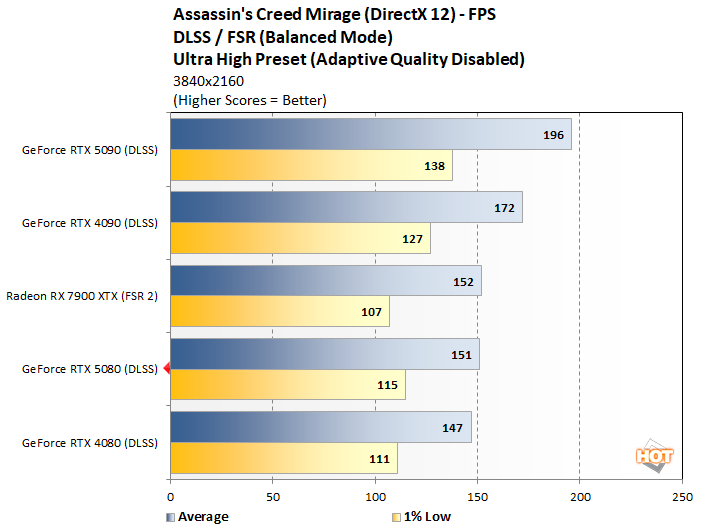
Black Myth: Wukong Benchmarks
Black Myth: Wukong is absolutely punishing at the Cinematic image quality preset with full ray tracing enabled (medium quality). The GeForce RTX 5080 FE ends up outrunning the RTX 4080 by 14% - 19%, depending on the resolution, and creeps a bit closer to the RTX 4090, but still ultimately trails the previous-gen flagship.

If you want to play Black Myth: Wukong with the highest image quality settings, resolution scaling with DLSS or FSR are practically a necessity. Flipping on DLSS pushes frame rates upwards considerably, but the GeForce RTX 5080 FE's lead over the RTX 4080 doesn't change much.
GeForce RTX 5080 F1 24 Racing Sim Benchmarks
F1 24 is Codemaster’s latest Formula One racing simulation, and like previous version of the game, it sports impressive visuals. This latest addition to the franchise supports DirectX 12 with ray tracing, and it incorporates support for a number of AMD's FidelityFX Super Resolution (FSR) features and NVIDIA technologies, like DLSS with frame generation. We tested the games with its Ultra High graphics preset, with ray tracing and TAA enabled at a couple of resolutions to see what these graphics cards could do.

F1 24


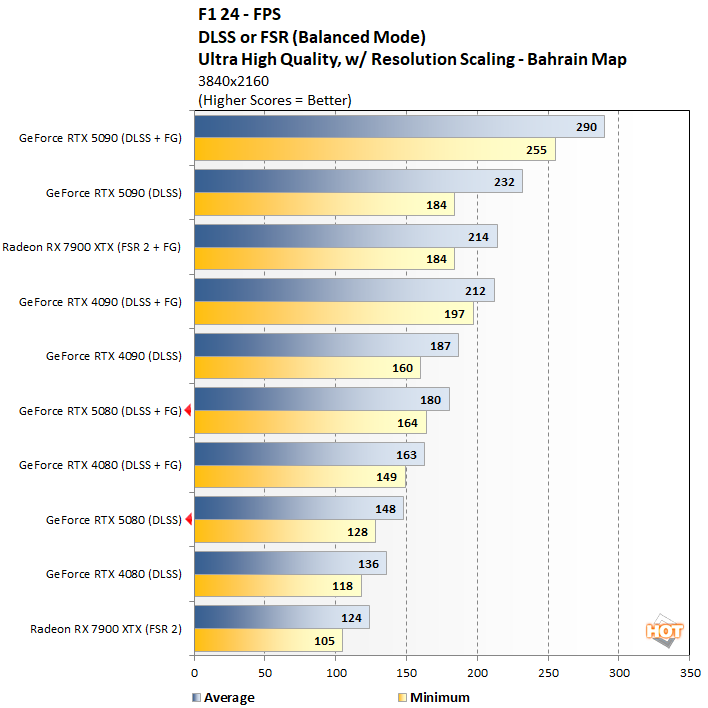
With DLSS or FSR 2 (Balanced) enabled in F1 24, all of the cards we tested put up excellent triple-digit framerates. The GeForce RTX 5080 FE, however, finishes in the familiar position, a few percentage points ahead of the RTX 4080.
Cyberpunk 2077 Benchmarks
Cyberpunk 2077 is based on the Cyberpunk tabletop role-playing game franchise. The tabletop game was published for the first time all the way back in 1988, and the intervening 30-odd years has not changed the game world all that much. As a result, Cyberpunk 2077 looks somewhat retro-futuristic, as this is how people in the '80s imagined what the future would look like.The PC game make use of virtually every advanced DirectX graphics technology and features support for DLSS, FSR and XeSS, and after a somewhat rocky release, it has been significantly updated and optimized for a multitude of hardware configurations. Although it is no longer considered a new title, Cyberpunk 2077 remains a showcase for many advanced graphics technologies.
We tested a pre-release version of Cyberpunk 2077 that's been updated with support for DLSS 4's transformer model and multi-frame generation. This is an important note because Cyberpunk foreshadows how future games, that are optimized for the Blackwell GPU architecture and the RTX 50 series, may perform relative to previous-gen GPUs.

Cyberpunk 2077
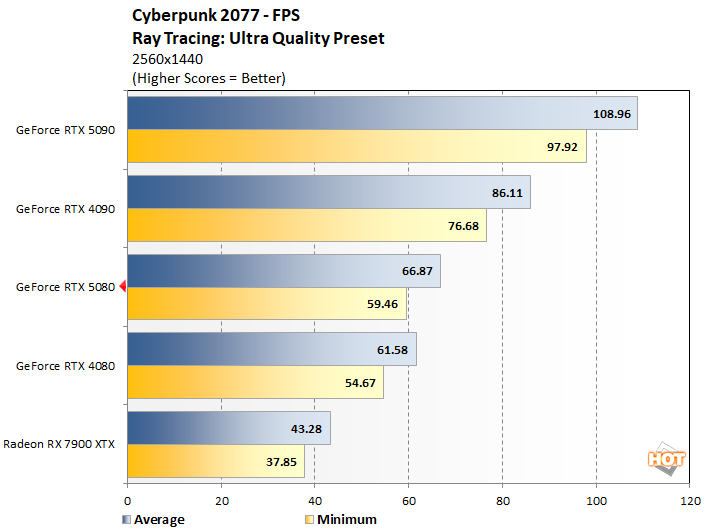
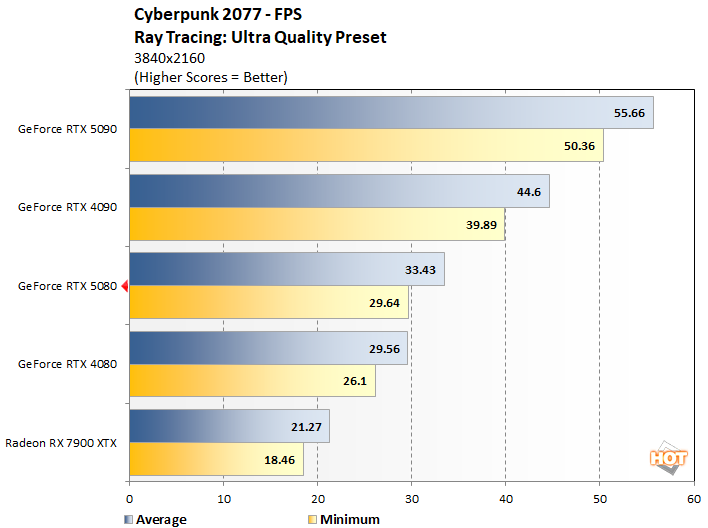
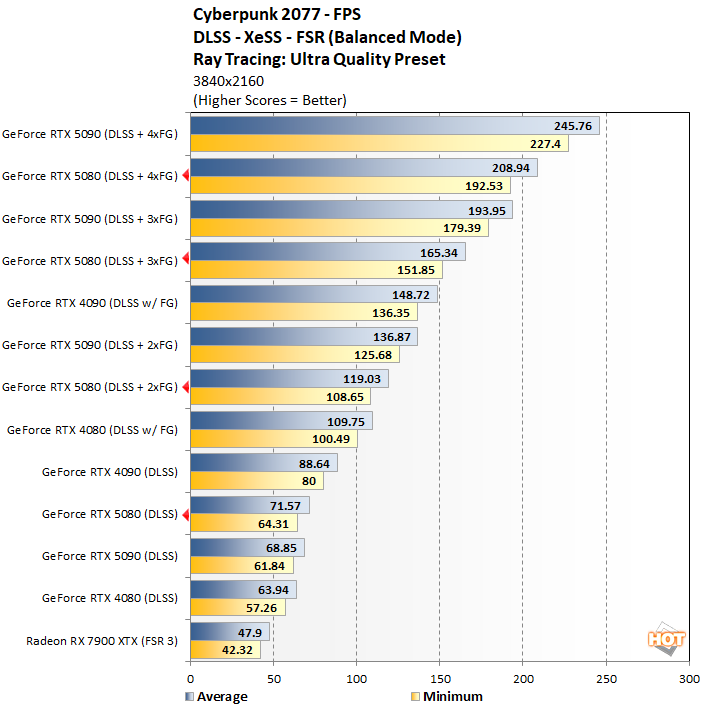
This is where the rubber meets the road. As you can see, with each successive level of DLSS with multi-frame generation enabled, the GeForce RTX 5080 FE blows past the RTX 4080 and ultimately lands behind only the RTX 5090, at the very top of the charts. Injecting those frames boosts performance dramatically, and the RTX 5080 tops out at over 200 FPS, which is over a 6X improvement versus native rendering.
Because this game also supports NVIDIA Reflex technology, latency is also low enough that you still feel engaged while playing with frame generation enabled, while image quality is also improved. You can definitely see some of the ways the new transformer model helps DLSS here.



